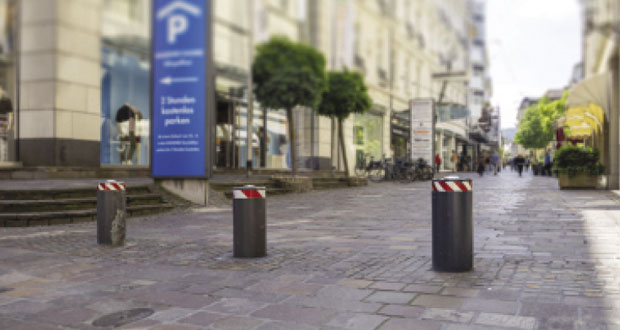 Hostile Vehicle Management (HVM) is a critical consideration for FMs looking to protect their property and more importantly their people, says Richard Winstanley of Bft Automation
Hostile Vehicle Management (HVM) is a critical consideration for FMs looking to protect their property and more importantly their people, says Richard Winstanley of Bft Automation
While the terror attacks of the last five years, both home and abroad, have been displaced in the headlines by the latest pandemic threat, facilities managers must continue to make this a primary focus of their security strategy. The terror threat in the UK remains ‘Substantial’, meaning an attack is likely.
Sadly, hostile vehicles are now a necessary consideration for any facilities, property and security manager working to protect their assets and more importantly, their people. A recent consultation in the historic city of Bath, frames a number of considerations that FMs need to make when designing their HVM strategy.
World Heritage Site Bath is rich in historic and cultural buildings – the beautifully preserved roman baths sit alongside pristine Georgian architecture, providing a huge attraction for tourists, not least since Netflix aired its global hit Bridgerton.
Bath undertook a consultation on how best to protect the city, in the case of physical threat and asked for views on a proposal by the Council & Police to provide appropriately improved security whilst continuing to allow the city’s businesses and service providers a viable, level of vehicle access. The questions this raised are relevant across the board and should be part of wider discussions around HVM.
PERMANENT OR TEMPORARY PROTECTION?
It is important to be clear about whether the HVM is temporary – perhaps for an event – or (as in Bath’s case) permanent fixture to protect a city or property at all times. Temporary measures are often best resolved with surface mounted products, but more permanent features would usually require ground works, including foundations into the ground where they are placed.
There are numerous permanent solutions which range from automatic bollards, static columns and barriers. And the aesthetic can be designed to suit the location. A permanent static barrier, for example, could appear as a planter, or a bench clad in a material that will blend with surroundings. This is an important consideration in a city like Bath which prides itself on its appearance and architectural heritage.
It’s worth noting, however, that concrete blocks, planters, Jersey Barriers and low concrete walls are all able to secure access points effectively but they’re difficult to install and move. After installation, they can no longer be moved without the use of a crane and specialised personnel which will result in higher costs and more time.
What’s more, if rammed by a truck travelling at more than 30 mph, conventional barriers will slow the vehicle, but could still be displaced beyond the point of impact and may still strike any persons present in the immediate vicinity.
The simplest and most versatile solution is to install anti-terrorism bollards, both fixed and retractable. These can adapt to the needs of the local administration by preserving the appearance of the environment, while providing safety in the case of impact at speeds of up to 50 mph.
BALANCING ACT
Online HVM resource centre ‘HVM Hub’ talks of the need to avoid a “fortress mentality”, particularly in city centres. In tourist centres, the atmosphere needs to remain welcoming for visitors and residents alike. However, there must be a balance between suitable protection and creating a system that is not obvious to those wishing to exploit weaknesses in the city’s security.
Think protection, safety, aesthetics.
While barriers are designed to keep hostile vehicles out, we must also consider the need to allow emergency vehicles in, should the need arise. This is where a solution such as retractable bollards will come into play, with vehicle access control built in for emergency and operational vehicles. This solution offers flexibility to accommodate temporary changes in traffic flow or events.
SITE ASSESSMENT AND MANAGEMENT
At the outset of the process, FMs will need to conduct a full site assessment – an investigation of the local environment, the potential blast stand-off perimeter, any traffic management in place and parking considerations. This applies whether the FM is managing a single building or working as part of a team to protect a town precinct.
There are a number of stakeholders who will need to be involved – in the case of Bath it’s a full public consultation. At the very minimum, a smaller scale project will need to involve the property occupants, management, security team and specialist installers to fully understand their needs and priorities.
TRAFFIC FLOW
To supplement the installation of any kind of physical barrier – whether this is to protect a warehouse, a hospital or a cultural centre – consider how traffic currently flows around the location and whether this can be reviewed to keep vehicles further away from the property.
Vehicles approaching the property will need an area of ‘run up’ in order to build up speed. If this is denied to them, by the very nature of the road layout, the risk to life and of damage caused to property is reduced.
Considerations for HVM are an essential part of any effective security strategy. Facilities managers will play an important role in shaping these strategies in the near and longer term. By considering the needs of the present, while keeping an eye to the future, FMs can take every precaution to protect their property and people from threat.





